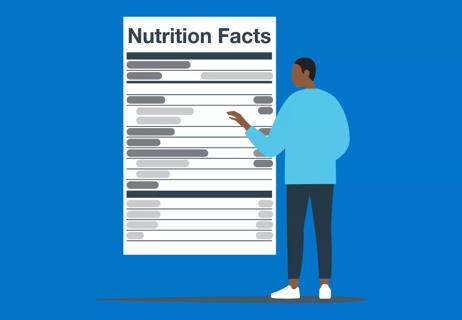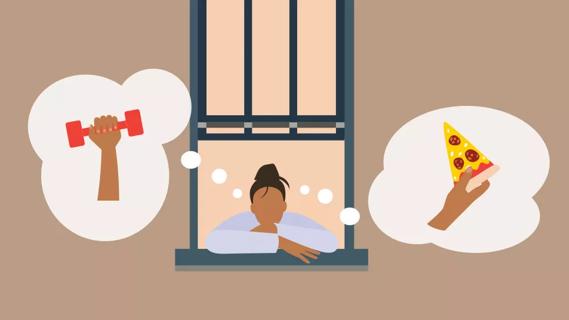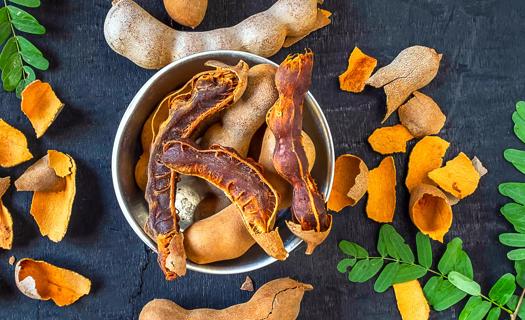Advertisement
A dietitian offers advice on moving past a misstep

Midway through cleaning out your car after another on-the-go week, a growing pile of crumpled fast food wrappers reveals a harsh reality: Your efforts to eat healthier definitely took a wrong turn.
Advertisement
Cleveland Clinic is a non-profit academic medical center. Advertising on our site helps support our mission. We do not endorse non-Cleveland Clinic products or services. Policy
It happens, says registered dietitian Kate Patton, MEd, RD, CSSD, LD. The key is what comes next. Here are some tips to get you back on track.
You’ve heard the phrase “don’t cry over spilled milk,” right? Well, don’t cry over a weekend binge of deep-fried chicken wings, either. There’s no benefit to heaping guilt on your plate for past chews.
Bad food days are part of life, whether it’s the result of scheduling pressures, stress eating during the pandemic or simply the lip-licking lure of decadent desserts.
Patton advocates an 80-20 rule for watching dietary intake: “If you’re eating what you should 80% of the time, you’re doing pretty well,” she says. “It’s OK if you have a cheat meal here and there. Just don’t let it get out of hand.”
Hit the reset button on healthy eating habits as soon as possible after a misstep to get yourself moving in the right direction, says Patton. Focus on keeping a one-day setback from ballooning into a one-week setback.
Consider planning out meals for the week ahead to restore your routine, and maybe add in a new recipe or food item to spice things up. Stock your fridge with nutrient-rich fruits and vegetables for when you crave a midday nibble.
Learn from your eating misadventures, too, Patton says. If life’s hectic pace continually leads to greasy drive-thru dinners, arrange alternatives such as nutritious meals packed in a car cooler or pre-made dishes that can be plated as soon as you get home.
Using a food tracking app or journal to better understand your eating routine could help pinpoint and address persistent stumbling blocks to your dietary goals. “It’s a great way to understand the ‘why’ behind your behaviors,” says Patton.
One of the easiest ways to climb back on the healthy eating wagon is to slow it down at mealtime. Gobbling down food often leads to overeating. “It takes 20 minutes for your stomach to tell your brain that it’s full,” says Patton. “Don’t get ahead of it.”
Patton recommends setting down your fork between bites to reduce the plate-to-mouth food transfer pace. Adding in sips of water applies the brakes, too, while also helping to fill you up and curb your appetite.
Advertisement
The tactic is especially effective at parties, where tackling a buffet can lead to mass consumption in a hurry. “Eating slower is one way to eat healthier,” says Patton. “It’s a good habit to build.”
Building a healthy diet isn’t something that’s done or undone in a single day. Instead, it’s a process best measured over months and years. It’s more important to develop lasting routines then to fixate on a momentary stumble.
Keep that in mind before fretting over the dent you put in a just-opened bag of potato chips.
“As long as you understand the bigger goal, you’ll be fine,” says Patton. “Be in it for the long haul.”
Advertisement
Learn more about our editorial process.
Advertisement

A variety of healthy foods can help reduce inflammation and keep other conditions at bay

Information on serving size, calories and nutrients can help you make healthy choices

The general rule is 0.8 to 1 gram of protein per kilogram of body weight — but that may not be right for you, and it’s important to determine what’s right for you

Adding salt to your water isn’t going to have measurable benefits — but there may be plenty of downsides

Pickles are low in fat and calories and rich in some vitamins and minerals, but they’re usually high in sodium

Learning about your relationship with food can help improve your eating behaviors and patterns

With a sweet, tangy flavor, this tropical fruit is super versatile and high in antioxidants

A change in diet won’t cure COPD — but getting to or maintaining a healthy weight will help

Focus on your body’s metabolic set point by eating healthy foods, making exercise a part of your routine and reducing stress

PFAS chemicals may make life easier — but they aren’t always so easy on the human body

While there’s little risk in trying this hair care treatment, there isn’t much science to back up the claims